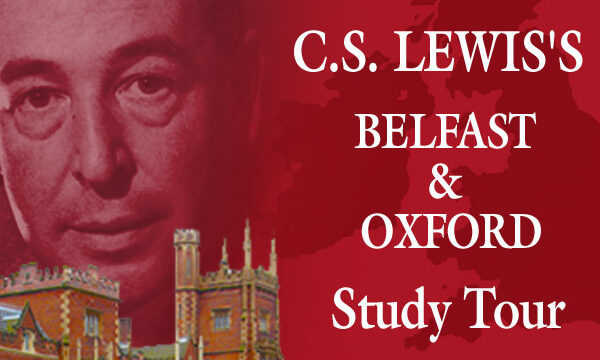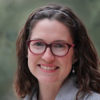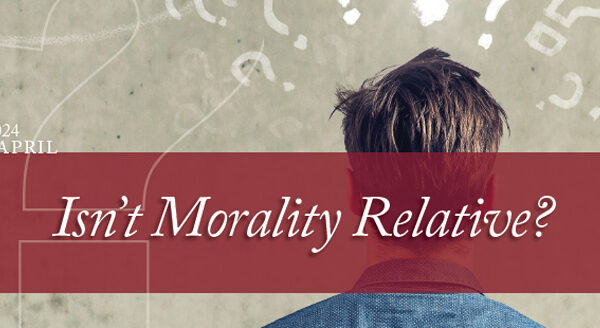Back to series



G.K. Chesterton (1874-1936)
Gilbert Keith Chesterton was, in a word, huge. Tall and weighing close to 400 pounds, he once told a chauffeur who suggested he attempt to exit a car sideways, “I have no sideways.” But Chesterton loomed large in other ways as well. He commanded the attention of an enormous audience through his prolific production of newspaper columns, short stories, novels, plays, poetry, and non-fiction. He counted many of Britain’s leading lights among his friends and enemies. And he exerted a powerful influence on the next generation of British Christian writers, a group that included J.R.R. Tolkien, T.S. Eliot, Dorothy Sayers, and C.S. Lewis.
Nothing in Chesterton’s upbringing suggested such an important career. He was born to a conventionally liberal, middle-class family that fit comfortably into the secular culture of the late Victorian era. Within that culture, Chesterton later wrote in his wonderful Autobiography, “We might almost say that agnosticism was an established church.” His education, at the Slade School of Art, was even more resolutely anti-religious, or at least anti-Christian. A creative and restless mind such as Chesterton’s might have been expected to explore anything other than orthodoxy.
Chesterton did try many byways before beginning the path of faith. Spiritualism, theosophy, and other occult pursuits enjoyed a heyday at the turn of the twentieth century, and young Gilbert dabbled in all of them. The nihilistic philosophy of Friedrich Nietzsche also hung in the air, along with the dialectical materialism of Karl Marx and Friedrich Engels, while the psychological speculations of Sigmund Freud glimmered on the horizon. The ideas that affected Chesterton most, though, related to the style then dominating the art world, Impressionism. Many people today find the vague flowers and hazy haystacks of artists like Claude Monet soothing, but they drove Chesterton to the brink of insanity. He reflected in the Autobiography,
I think there was a spiritual significance in Impressionism, in connection with this age as the age
of scepticism. I mean that it illustrated scepticism in the sense of subjectivism. Its principal was that if all
that could be seen of a cow was a white line and a purple shadow, we should only render the line and
the shadow; in a sense we should only believe in the line and the shadow, rather than in the cow. … The
philosophy of Impressionism is necessarily close to the philosophy of Illusion. And this atmosphere also
tended to contribute, however indirectly, to a certain mood of unreality and sterile isolation that settled at
this time upon me; and I think upon many others.
The Impressionist, in Chesterton’s view, played too much the role of God, imagining himself to be creating the world entirely from his own perspective. Chesterton could not handle that kind of responsibility, and it sent him into depression. Fortunately, he found his way to the writings of Robert Browning, Robert Louis Stevenson, Walt Whitman, and other authors who affirmed the positive existence of the outside world. Relieved of the burden of creating reality by himself, Chesterton emerged from his depression, left art school, and headed to London’s Fleet Street to turn his considerable writing skills toward a career in journalism. In the back of his mind, another quest had begun as well: the search for someone to thank for the beauty of the world he had rediscovered.
Finding Faith
Chesterton’s slow journey toward Christian faith involved many pushes and pulls. The jaded Fleet Street milieu and personal doubts about organized religion, especially Catholicism, held him back. Meanwhile a growing attraction to Frances Blogg, a devout Anglican whom he met at a London debating salon, drew him forward. By the time he married Frances, in 1901, he considered himself a Christian, but his theology was far from mature. He honed his
beliefs through spirited printed debates.
Even before he adopted Christianity, Chesterton was certain of what he disliked in modern thought. The radical subjectivity of Impressionism led the mind to a dead end. Enchantment with human potential, as expressed in Nietzsche’s Superman ideal or in the milder optimism of average liberals, ignored too much evidence of frailty and corruption. Materialism proclaimed that the visible world constituted the whole of reality but failed to offer proof of this soul-numbing assertion. In short, the trendy philosophers who urged people to question everything could not themselves answer the most basic question, “And why should I listen to you?”
Chesterton first articulated a Christian response to modern skepticism in the pages of a socialist London newspaper called the Clarion. Its editor, Robert Blatchford, was a staunch atheist, but he nonetheless felt that faith deserved a fair hearing. For six months in 1903-4, he invited Chesterton and other Christians to defend their beliefs in weekly columns. Chesterton’s three contributions argued that the Christian worldview was much more rational than anything so-called rationalists had proposed.
Chesterton lodged additional complaints against the day’s leading thinkers in his regular columns for London’s Daily News and in the 1905 book Heretics. These writings attracted the interest of Christians and critics alike, but they raised more questions than they answered. One critical reviewer announced, “I shall not begin to worry about my philosophy of life until Mr. Chesterton discloses his.” Chesterton responded in 1908 with his celebrated book Orthodoxy, which he called “unavoidably affirmative and therefore unavoidably autobiographical.”
Orthodoxy traced the author’s descent into despair, recovery of wonder through literature (especially children’s fantasy literature), and eventual discovery that every “new” truth he encountered had in fact been taught by Christianity for centuries. Chesterton laid special emphasis on the paradoxes of Christianity, those teachings that seem foolish or self-contradictory on the surface but resonate deeply with what the soul knows to be true. For example, while ancient pagans and modern rationalists defined modesty as “the balance between mere pride and mere prostration,” Christianity insisted that people embrace both extremes: “In so far as I am Man I am the chief of creatures. In so far as I am a man I am the chief of sinners.” Similarly, pagans and rationalists practiced charity as reasonable goodwill toward reasonably deserving debtors. According to these schools of thought, “there were some people one could forgive, and some one couldn’t: a slave who stole wine could be laughed at; a slave who betrayed his benefactor could be killed, and cursed even after he was killed.” Christianity, by contrast, “divided the crime from the criminal. The criminal we must forgive unto seventy times seven. The crime we must not forgive at all.”
In Orthodoxy, Chesterton displayed a mature and nuanced, albeit unconventional, faith, but his spiritual journey was not complete. He wondered which church best embodied the fullness of the Christian tradition. First Chesterton joined the Church of England—an obvious choice as the national church and the church of his wife, Frances. He was concerned, though, that modernism seemed to be creeping into Anglican theology, undermining the supernatural claims that had drawn Chesterton to Christianity. Around 1911, he began to believe that only one church could withstand the onslaught of modernism, the Roman Catholic Church.
Several factors weighed in Chesterton’s decision to become a Catholic. Frances and his family opposed the move. Many people in England still saw Catholicism as the mysterious, foreign, and despotic religion that had provoked so much pain during the Reformation. On the other side, Chesterton’s brother Cecil showed interest in Catholicism, and Chesterton had developed immense respect for a Catholic priest, John O’Connor, who would later become the inspiration for Chesterton’s fictional sleuth Father Brown. A trip to Italy, which included Easter morning worship at a Catholic church in Brindisi, tipped the balance. Chesterton joined the Roman Catholic Church in 1922 and was overjoyed when Frances joined, too, in 1926.
A Sharp Pen
Chesterton never assumed the quiet life of a writer. He lectured and participated in public debates. He traveled. He threw wild parties at which guests had to don costumes and act out sketches. He even appeared, along with George Bernard Shaw and other literary figures, in a western film made during World War I by Peter Pan author J.M. Barrie. Nonetheless, it is for his many published pieces that he is chiefly remembered.
The Father Brown mysteries are among Chesterton’s most treasured works. They follow the whodunit format established by Sherlock Holmes creator Arthur Conan Doyle, but Chesterton added spiritual depth. Like Holmes, Brown keenly observes crime scene details and human behavior, but he also diagnoses the heresies that drive people to sin. The Father Brown collection includes 51 tales that are considered by mystery enthusiasts to be some of the best examples of the genre. Chesterton’s rules for mystery writing, including transparency regarding clues and a solution simple enough to be shouted in one sentence, were codified by London’s Detection Club, an elite group that claimed Dorothy Sayers and Agatha Christie as members.
Chesterton also gained distinction in the genre of biography, even though his method was far from scholarly. For his famous biography of Thomas Aquinas, he reportedly collected a stack of books on the man, glanced through the first one, shut it, and proceeded to dictate his account ex tempore. Yet Chesterton understood Aquinas, and for this reason scholar Etienne Gilson called the biography “the best book ever written on St. Thomas.” Chesterton’s book on Francis of Assisi rested on no more historical research but has been similarly praised for its charm and insight.
Between work on these and dozens of other books, Chesterton continued to churn out essays on subjects ranging from bits of string and potent cheeses to women’s suffrage, World War I, and America’s experiment with Prohibition. (He liked the first two and disapproved of the others.) Many of these occasional pieces strike contemporary readers as trivial or time-bound, but others still hit their marks. For example, Chesterton correctly predicted that “the war to end all wars” would actually lead to a more horrible conflict—what we know as World War II. He also foresaw that the entrance of women into politics and commerce would inevitably invite the greater influence of the state over home life. Frequently quirky or cranky, Chesterton was also frequently right.
Though certainly famous in his day, Chesterton gained even more recognition after his death in 1936. Much of this acclaim stems from the praise of C.S. Lewis, who hailed Chesterton as a model and credited Chesterton’s religious history The Everlasting Man with influencing his conversion to Christianity. Chesterton also lives on through countless pithy quotes that pop up in all sorts of books and articles and swirl around the Internet. (Just try searching for “Chesterton quotes” on Google.)
Though Chesterton could not have imagined this development, he would be gratified to learn that twenty-first century society continues to find value in links to the past. He would be even more gratified if encounters with his words enticed people to join the community founded on the Word. As he wrote in Orthodoxy,
Plato has told you a truth; but Plato is dead. Shakespeare has startled you with an image; but
Shakespeare will not startle you with any more. But imagine what it would be to live with such men still
living, to know that Plato might break out with an original lecture tomorrow, or that at any moment
Shakespeare might shatter everything with a single song. The man who lives in contact with what he
believes to be a living Church is a man always expecting to meet Plato and Shakespeare tomorrow at
breakfast.

Elesha Coffman
ProfessorElesha Coffman, is an Assistant Professor of History, Baylor University. She teaches modern U.S. and intellectual history at Baylor. She graduated from Wheaton College and worked at Christianity Today International before completing her PhD at Duke University. Her scholarly interests include American evangelical and mainline Protestant traditions, print media, assessments of cultural influence, and religious constructions of gender. She is writing a spiritual biography of the anthropologist Margaret Mead for the Oxford University Press “Spiritual Lives” series, edited by Timothy Larsen.

 COPYRIGHT: This publication is published by C.S. Lewis Institute; 8001 Braddock Road, Suite 301; Springfield, VA 22151. Portions of the publication may be reproduced for noncommercial, local church or ministry use without prior permission. Electronic copies of the PDF files may be duplicated and transmitted via e-mail for personal and church use. Articles may not be modified without prior written permission of the Institute. For questions, contact the Institute: 703.914.5602 or email us.
COPYRIGHT: This publication is published by C.S. Lewis Institute; 8001 Braddock Road, Suite 301; Springfield, VA 22151. Portions of the publication may be reproduced for noncommercial, local church or ministry use without prior permission. Electronic copies of the PDF files may be duplicated and transmitted via e-mail for personal and church use. Articles may not be modified without prior written permission of the Institute. For questions, contact the Institute: 703.914.5602 or email us.
-
Recent Podcasts
A Welcome Change in Apologetics
by Randy Newman, Aimee Riegert on April 19, 2024We’re burdened for our friends who don’t know...Read More
-
Questions That Matter Podcast – Samuel James and Digital Liturgies
by Samuel James, Randy Newman on April 19, 2024
-
The Side B Stories – Dr. James Tour’s story
by Jana Harmon, James Tour on April 12, 2024
-
Recent Publications
Isn’t Morality Relative?
by Christopher L. Reese on April 1, 2024It is widely accepted in the Western world...Read More
-
Do Muslims and Christians Worship the Same God?
by Andy Bannister on March 1, 2024
-
Artificial Intelligence and Its Impacts on Humanity
by John Lennox on February 13, 2024
0
All Booked
0.00
All Booked
0.00
All Booked
20599
GLOBAL EVENT: 2024 Study Tour of C.S. Lewis’s Belfast & Oxford
https://www.cslewisinstitute.org/?event=global-event-2023-study-tour-of-c-s-lewis-belfast-oxford-2&event_date=2024-06-22®=1
https://www.paypal.com/cgi-bin/webscr
2024-06-22

Next coming event
Days
Hours
Minutes
Seconds
GLOBAL EVENT: 2024 Study Tour of C.S. Lewis’s Belfast & Oxford
On June 22, 2024 at 12:00 pmat Belfast, Northern Ireland & Oxford, EnglandCategories
Speakers

Elesha Coffman
Professor
Team Members

Elesha Coffman
ProfessorElesha Coffman, is an Assistant Professor of History, Baylor University. She teaches modern U.S. and intellectual history at Baylor. She graduated from Wheaton College and worked at Christianity Today International before completing her PhD at Duke University. Her scholarly interests include American evangelical and mainline Protestant traditions, print media, assessments of cultural influence, and religious constructions of gender. She is writing a spiritual biography of the anthropologist Margaret Mead for the Oxford University Press “Spiritual Lives” series, edited by Timothy Larsen.





